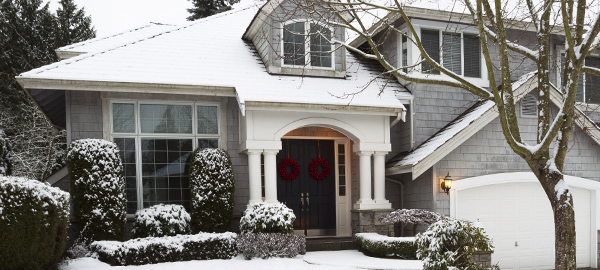Why is my gas bill so high in the winter?

When the cold wind starts to blow and winter draws near, it’s time to start thinking about your natural gas bill. After all, heating your home in the winter can come at a steep price, especially if you haven’t taken steps to prepare your house for the cold. However, addressing a few simple questions about your home can help you heat it more efficiently and may even save you some money.
So, if you’re wondering what might contribute to a high gas bill, consider these four questions:
1. Are your doors and windows sealed and weatherized?
Approximately 25-30% of heat loss in homes escapes through doors and windows. To help reduce heat loss in your home and minimize natural gas bill, you can:
- Check your home’s windows and doors for small gaps where drafts can sneak in and warm air can leak out.
- Install weather stripping to patch up places where you might experience heat loss. Your furnace won’t have to work as hard or consume as much natural gas to keep your home warm.
- Even with weather stripping around your windows’ sills and edges, warm air has the potential to escape through the windowpanes. Put up curtains to add an extra layer of insulation and minimize heat loss, or install plastic window insulation.
2. How well is your home insulated?
Older homes can have less or lower quality insulation than newer ones. In fact, depending on how old a house is, some have none at all. Adding insulation to your home can significantly minimize heat loss and help make it more natural gas efficient.
In most homes, attics and basements are typically spots where heat loss frequently occurs, so checking or adding insulation in those locations is a good way to make heating your home more energy efficient.
3. How old is your furnace, and what was its last tune-up?
If your furnace is more than 15 years old, it may be time to consider an upgrade. Many of the new ENERGY STAR®-rated models are around 11% more efficient than older, standard models.
If you don’t need to replace your furnace, make sure you’re doing regular tune-ups and replacing the filter often. Keeping your furnace in top shape will not only optimize its efficiency but also ensure your furnace can hold up over many years of use.
4. Is your thermostat programmed for maximum efficiency?
Strategically programming your thermostat can help lower the amount of natural gas being used to heat your home. To use less natural gas:
- Keep your home’s temperature below 70 degrees in the colder months.
- Let the temperature drop by several degrees overnight or when you’re out of the house. This will help reduce natural gas consumption without compromising your comfort.
- Get a smart thermostat. These devices can learn your heating habits and can save you time and money. There are several different brands and models available, so make sure you choose the right one for you.
By considering these factors and improving your home’s efficiency, you can help protect your budget and keep your home and your family much cozier this winter.
If you’d like to learn about how natural gas gets processed and delivered to your home, you can watch this informative video on how the pipeline works.